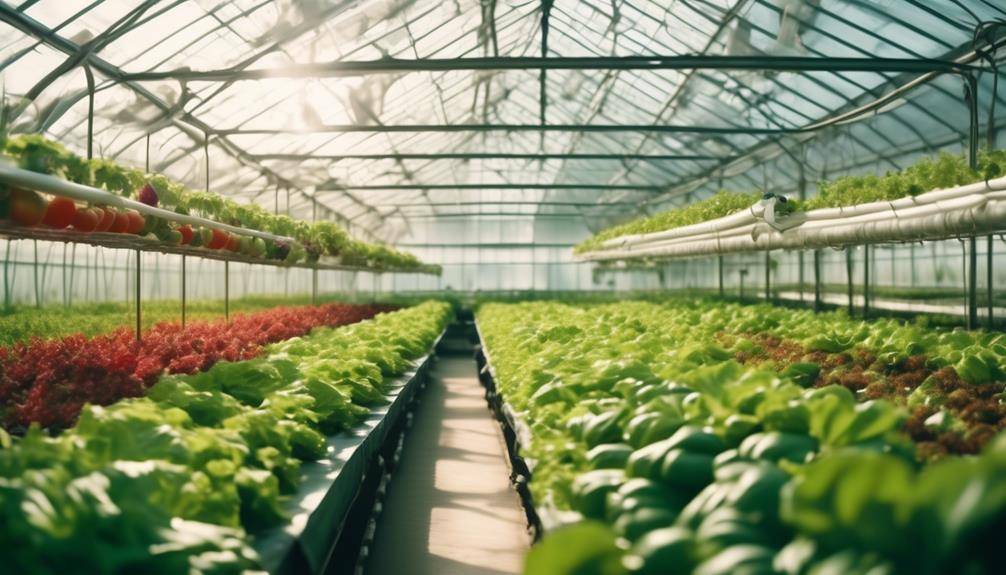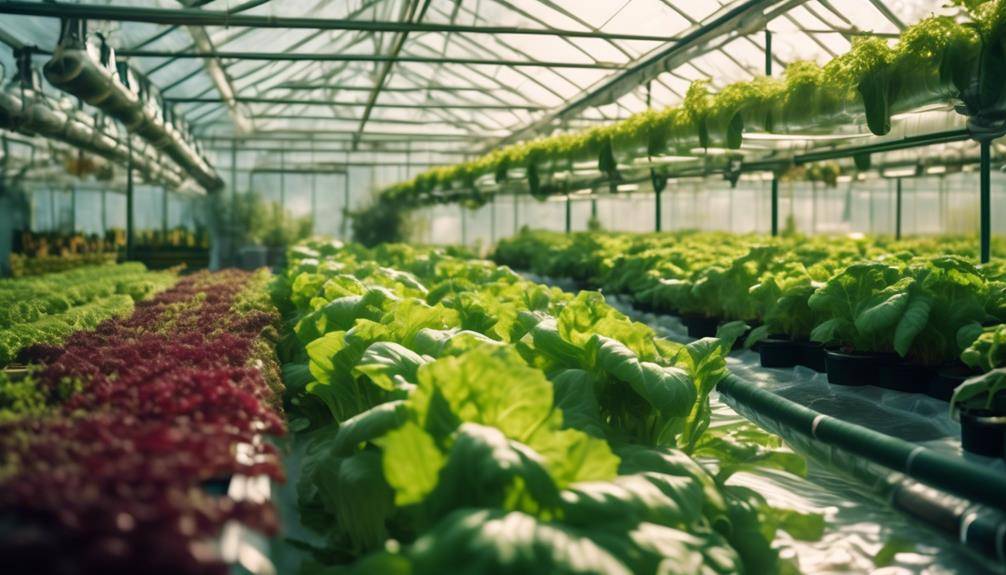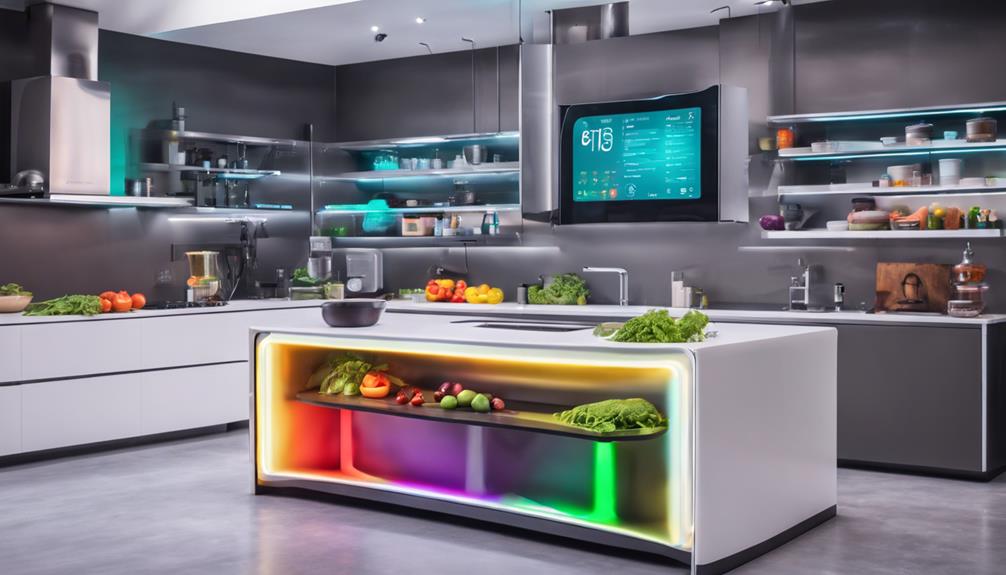How To Start A Hydroponics Farm

How To Start A Hydroponics Farm; Thinking about starting a hydroponics farm, but not sure where to begin? Look no further! With the growing popularity of hydroponics, you can join the ranks of innovative farmers who are revolutionizing the way we grow crops. From the benefits of hydroponics farming to understanding different hydroponic systems, this discussion will provide you with all the essential information you need to kickstart your own hydroponics adventure. So, grab your gardening gloves and get ready to embark on a journey that promises higher yields, efficient resource utilization, and a sustainable future.
Benefits of Hydroponics Farming
One of the major benefits of hydroponics farming is the ability to control the nutrient levels and environment for optimal plant growth. Vertical farming, a popular method in hydroponics, allows for the vertical stacking of plants, maximizing space utilization. This method is particularly useful in urban areas where land is limited. By growing plants vertically, hydroponic farmers can produce a higher yield in a smaller footprint compared to traditional agriculture.
Sustainable agriculture is another significant advantage of hydroponics farming. With hydroponics, water usage is significantly reduced compared to conventional farming methods. The closed-loop system allows for the recirculation and reuse of water, minimizing waste. Additionally, hydroponics eliminates the need for soil, reducing the risk of soil erosion and degradation. This promotes sustainable land use and preserves natural resources.
Moreover, hydroponics farming eliminates the use of chemical pesticides and herbicides. By controlling the nutrient levels and environment, hydroponic farmers can create a natural balance that minimizes the risk of pests and diseases. This not only reduces the environmental impact but also provides consumers with healthier and safer produce.
Essential Tools and Equipment
Now let’s talk about the essential tools and equipment you’ll need to start your hydroponics farm. Having the right equipment is crucial for the success of your operation. From grow lights to nutrient reservoirs, a comprehensive list of required equipment will be discussed, along with key tools that will help you achieve optimal results.
Required Equipment List
To successfully operate a hydroponics farm, it is crucial to have a comprehensive and efficient set of essential tools and equipment. When it comes to hydroponic system setup, the equipment you will need includes grow trays, reservoir tanks, nutrient solutions, pH testers, and air pumps. Grow trays are used to hold the plants and allow the nutrient solution to circulate. Reservoir tanks store the nutrient solution for easy access. Nutrient solutions provide the necessary elements for plant growth. pH testers are essential for monitoring and adjusting the pH levels of the nutrient solution. Air pumps ensure proper oxygenation of the nutrient solution.
Additionally, equipment maintenance is vital to keep your hydroponic system running smoothly. Regular cleaning and disinfection of equipment, checking and replacing worn-out parts, and monitoring temperature and humidity levels are all part of effective equipment maintenance. By investing in high-quality tools and consistently maintaining them, you can maximize the productivity and success of your hydroponics farm.
Key Tools for Success
To ensure success in operating a hydroponics farm, it is essential to have the necessary tools and equipment for efficient and effective cultivation. Hydroponics farming techniques rely heavily on specific tools designed to optimize crop yields. One of the key tools is a pH meter, which allows you to monitor and adjust the pH levels of your nutrient solution. Maintaining the proper pH range is crucial for the absorption of essential nutrients by the plants. Another essential tool is a TDS meter, which measures the total dissolved solids in the nutrient solution. This helps you ensure that the right amount of nutrients is being delivered to the plants.
Additionally, a high-quality lighting system, such as LED grow lights, is vital for providing the right spectrum and intensity of light necessary for photosynthesis. A temperature and humidity monitor is also necessary to maintain optimal environmental conditions. Lastly, a reliable irrigation system, equipped with timers and drip emitters, will efficiently deliver the nutrient solution to the plants while minimizing waste.
Choosing the Right Location
Select a suitable location for your hydroponics farm that meets the specific requirements of your operation. When choosing the right location for your urban farming venture, consider the following factors:
- Climate: Ensure the location has a favorable climate for year-round cultivation. A hydroponic greenhouse requires controlled temperature, humidity, and light conditions. Look for a region with mild winters and moderate summers, or invest in advanced climate control systems.
- Access to Resources: Choose a location that provides easy access to essential resources. This includes a reliable water supply for your hydroponic system, as well as electricity for lighting and other equipment. Additionally, proximity to transportation networks will facilitate the distribution of your produce to local markets.
- Space Availability: Evaluate the available space to determine if it can accommodate your desired scale of production. Measure the area and consider the layout of your hydroponic systems, as well as any additional infrastructure such as storage areas or processing facilities.
- Zoning and Regulations: Check local zoning laws and regulations to ensure the location is suitable for agricultural activities. Some areas may have restrictions on operating a hydroponics farm, so it is important to comply with all legal requirements.
Understanding Different Hydroponic Systems
When considering the location for your hydroponics farm, it is essential to have a clear understanding of the different hydroponic systems available. Different hydroponic techniques offer various advantages and require specific maintenance practices to ensure optimal plant growth and productivity.
One of the most commonly used hydroponic systems is the nutrient film technique (NFT). This system involves a thin film of nutrient-rich water flowing continuously over the roots of the plants, providing them with a constant supply of nutrients. NFT systems are known for their efficiency and water conservation, but they require regular monitoring of nutrient levels and pH to avoid imbalances that could harm the plants.
Another popular hydroponic system is the deep water culture (DWC). In DWC systems, plants are suspended in a nutrient-rich solution with their roots submerged in the water. This method provides excellent aeration to the roots, promoting healthy growth. However, regular maintenance is crucial to prevent the risk of root rot and algae growth in the water.
Ebb and flow systems, also known as flood and drain systems, are another option. These systems periodically flood the plant roots with nutrient solution and then drain it away. This technique allows for better control of nutrient uptake and oxygenation of the roots. However, it requires careful monitoring of the timing and duration of the flood cycles to prevent waterlogging and ensure optimal plant growth.
Drip irrigation systems are widely used in hydroponics as well. This method involves delivering nutrient solution directly to the roots through a network of tubes and emitters. Drip systems allow for precise nutrient delivery and can be easily automated. However, regular system maintenance is necessary to prevent clogging of the emitters and ensure consistent nutrient supply.
Selecting the Ideal Growing Medium
When choosing the ideal growing medium for your hydroponics farm, it is important to consider factors such as water retention, aeration, nutrient delivery, and pH stabilization. The growing medium plays a crucial role in hydroponic systems as it provides support for the plants’ roots and helps deliver essential nutrients. Here are some options to consider:
- Coconut Coir: This is a popular choice for hydroponic farmers due to its excellent water retention properties. Coconut coir retains moisture well, ensuring that plants have a constant supply of water. It also provides good aeration, allowing the roots to access oxygen.
- Perlite: Perlite is a lightweight and porous medium that provides excellent aeration. It helps to prevent waterlogging and allows roots to breathe. However, perlite does not retain water, so it is essential to have a reliable irrigation system in place to ensure plants receive sufficient moisture.
- Rockwool: Rockwool is a synthetic material made from melted rock and spun into fibers. It is an effective growing medium that provides good water retention, aeration, and pH stabilization. Rockwool also has the advantage of being reusable, making it a sustainable choice for hydroponic farming.
- Vermiculite: Vermiculite is a mineral-based medium that has excellent water retention capabilities. It retains moisture while still providing adequate aeration to the roots. However, it is important to note that vermiculite has a neutral pH, which may require adjusting depending on the nutrient solutions used.
Remember to choose a growing medium that suits your specific crop requirements and hydroponic system. Consider factors such as the type of nutrient solutions used and the level of aeration needed for optimal plant growth. By selecting the ideal growing medium, you can create a successful hydroponics farm that maximizes plant health and productivity.
Nutrient Solutions for Hydroponics
Now let’s talk about the essential nutrients that plants need in a hydroponic system. These nutrients include macronutrients like nitrogen, phosphorus, and potassium, as well as micronutrients like iron, manganese, and zinc. Mixing nutrient solutions involves carefully measuring and balancing the right amounts of these nutrients to ensure optimal plant growth and development. It is important to follow a nutrient schedule and regularly monitor the nutrient levels to maintain a healthy and thriving hydroponic farm.
Essential Nutrients for Plants
To ensure optimal growth and development, plants in a hydroponics farm require a carefully balanced nutrient solution. Hydroponic nutrient solutions provide plants with all the essential nutrients they need to thrive. Here are some key points to consider when it comes to the essential nutrients for plants in a hydroponics system:
- Macronutrients: Plants require large amounts of macronutrients such as nitrogen, phosphorus, and potassium. These nutrients play a crucial role in plant growth and development.
- Micronutrients: Plants also need small amounts of micronutrients like iron, manganese, and zinc. These nutrients are essential for various metabolic processes.
- Nutrient deficiency symptoms: It is important to monitor plants for any signs of nutrient deficiencies, such as yellowing leaves or stunted growth. Adjusting the nutrient solution accordingly can help prevent further issues.
- pH balance: Maintaining the correct pH level in the nutrient solution is crucial for nutrient uptake and plant health.
Mixing Nutrient Solutions
To mix nutrient solutions for hydroponics, you will need to carefully measure and combine the necessary macronutrients and micronutrients in the correct proportions. The nutrient concentration is a critical factor in ensuring the plants receive the right amount of nutrients for optimal growth. Start by measuring out the required amounts of macronutrients such as nitrogen, phosphorus, and potassium, as well as micronutrients like iron, manganese, and zinc.
These nutrients can be purchased in the form of water-soluble salts or pre-mixed nutrient solutions. Once you have the correct amounts, mix them with water in a container, ensuring thorough dissolution. After mixing, it is important to adjust the pH of the solution to the ideal range for hydroponic plants, typically between 5.5 and 6.5. Use pH adjustment solutions like pH buffers or acids to achieve the desired pH level. Regular monitoring of nutrient concentration and pH adjustment will help maintain a healthy nutrient solution for your hydroponic farm.
Managing Water and Ph Levels
To manage water and pH levels effectively in your hydroponics farm, it is crucial to maintain a precise balance between nutrient solutions and monitor the pH levels regularly. Water quality plays a significant role in the success of your hydroponics system. It is essential to use clean, filtered water to avoid any potential contamination and ensure optimal plant growth. Additionally, regularly testing the pH levels of your nutrient solution is vital for maintaining a stable and suitable environment for your plants.
Here are some key points to consider when managing water and pH levels in your hydroponics farm:
- Maintain pH balance: The pH level of your nutrient solution should be carefully monitored and adjusted. Most hydroponic crops thrive in a slightly acidic environment, with a pH range between 5.5 and 6.5. Use a pH testing kit or pH meter to measure the pH level and make necessary adjustments by adding pH up or pH down solutions.
- Monitor nutrient concentration: Regularly check the nutrient concentration in your solution to ensure that it is within the appropriate range for your plants. Nutrient solutions that are too concentrated can lead to nutrient burn, while solutions that are too weak may result in nutrient deficiencies.
- Avoid overwatering: Overwatering can lead to oxygen deprivation in the root zone, causing root rot and other problems. It is crucial to provide adequate moisture to the plants without saturating the growing medium.
- Prevent algae growth: Algae can thrive in the presence of excess light and nutrients. To prevent algae growth, cover your nutrient reservoir and ensure it is kept in a dark and cool location. Regularly clean and sanitize the reservoir to maintain optimal water quality.
Lighting and Temperature Control
Maintaining optimal lighting and temperature control is crucial for the success of your hydroponics farm, as it directly affects the growth and development of your plants. When it comes to lighting, it is important to ensure lighting efficiency to maximize plant growth. LED grow lights are a popular choice in hydroponics farming due to their energy efficiency and ability to provide the right spectrum of light for plant growth. These lights emit very little heat, reducing the need for additional cooling mechanisms.
Additionally, they can be customized to provide the specific wavelengths of light that are most beneficial for different stages of plant growth. By using LED grow lights, you can save on energy costs and provide your plants with the optimal lighting conditions they need.
Temperature regulation is equally important in a hydroponics farm. The ideal temperature range for most plants in a hydroponics system is between 68 to 78 degrees Fahrenheit (20 to 25 degrees Celsius). Consistent temperature control is essential for plant growth and preventing stress or damage to the plants. If the temperature rises above the optimal range, it can lead to heat stress and reduced yields.
On the other hand, if the temperature drops too low, it can slow down plant growth and increase the risk of diseases. To maintain the desired temperature, it is advisable to use a thermostat-controlled heating and cooling system. This system will help to maintain a stable temperature throughout the day and night, ensuring optimal conditions for your plants.
Pest and Disease Prevention
To prevent pests and diseases in your hydroponics farm, you can implement Integrated Pest Management (IPM) techniques. This approach involves using a combination of methods such as monitoring, physical barriers, and biological controls to manage pests and diseases effectively. Another strategy is to introduce beneficial insects, like ladybugs or predatory mites, which can help control pest populations naturally. Additionally, selecting disease-resistant cultivars can minimize the risk of plant diseases and reduce the need for chemical treatments.
Integrated Pest Management
Implementing an effective integrated pest management system is crucial for preventing pests and diseases in your hydroponics farm. By following these practical steps, you can ensure the health and productivity of your crops:
- Introduce beneficial insects: Encourage the presence of natural predators like ladybugs or lacewings to control pest populations. These insects feed on harmful pests, keeping their numbers in check.
- Use disease-resistant cultivars: Select plant varieties that are naturally resistant to common diseases. This reduces the risk of infection and minimizes the need for chemical treatments.
- Monitor and identify pests: Regularly inspect your plants for signs of pests or diseases. Early detection allows for prompt intervention and prevents the spread of infestations.
- Practice cultural control measures: Implement proper sanitation practices, such as cleaning equipment and removing plant debris, to eliminate potential breeding grounds for pests and diseases.
Beneficial Insects
To effectively prevent pests and diseases in your hydroponics farm, it is essential to harness the power of beneficial insects. These natural predators play a crucial role in biological control, helping to maintain a healthy and balanced ecosystem within your farm. By introducing beneficial insects, you can greatly reduce the need for chemical pesticides and insecticides, minimizing the risk of contamination and ensuring the production of pesticide-free crops. Ladybugs, for example, are voracious predators of aphids and other soft-bodied pests, while lacewings feed on mites, thrips, and whiteflies.
Additionally, predatory mites can help control spider mites, and parasitic wasps are effective against caterpillars and other harmful insects. Integrating these beneficial insects into your hydroponics system will provide a natural and sustainable solution to pest management, promoting the overall health of your crops.
Disease-resistant Cultivars
By selecting disease-resistant cultivars, you can effectively prevent pests and diseases in your hydroponics farm while ensuring the health and productivity of your crops. Disease-resistant crops have been specifically bred to withstand common diseases and pests, reducing the need for chemical treatments and minimizing crop loss. Here are some disease prevention techniques to consider:
- Choose disease-resistant cultivars: Look for varieties that have been bred to resist specific diseases prevalent in your area.
- Practice crop rotation: Rotate your crops to prevent the buildup of disease pathogens in the soil.
- Maintain proper sanitation: Clean and disinfect your equipment, tools, and hydroponic system regularly to minimize the spread of diseases.
- Monitor closely: Regularly inspect your crops for signs of disease and take appropriate action to prevent it from spreading.
Choosing the Right Crops
When selecting crops for your hydroponics farm, it is essential to consider factors such as crop suitability, market demand, and resource availability. Crop selection plays a crucial role in the success of your hydroponics venture, as it directly impacts yield optimization and overall profitability.
The first step in choosing the right crops is to assess their suitability for hydroponic cultivation. Certain crops, such as lettuce, herbs, and tomatoes, are well-suited for hydroponics due to their ability to thrive in a soil-less environment. These crops have shallow root systems and can easily absorb nutrients from the nutrient-rich water solution. On the other hand, crops like corn or root vegetables may not be suitable for hydroponics due to their extensive root systems or specific soil requirements.
Market demand is another important consideration. Conduct thorough market research to determine which crops are in high demand and fetch a good price in your target market. Consider growing crops that are locally popular or have a high demand in the organic or specialty produce market. This will ensure a steady demand for your crops and maximize your potential profits.
Resource availability is also a critical factor when choosing crops for your hydroponics farm. Evaluate the availability of resources such as space, water, and electricity. Some crops may require more space or specific lighting conditions, while others may have higher water or nutrient requirements. Opt for crops that align with your available resources to ensure efficient utilization and minimize wastage.
Seed Selection and Germination
Now that you’ve chosen the right crops for your hydroponics farm, it’s time to focus on seed selection and germination. Selecting the best hydroponic seeds is crucial for ensuring a successful harvest. You’ll also need to master effective germination techniques to give your plants the best start possible.
Best Hydroponic Seeds
To ensure optimal results in your hydroponics farm, selecting the best hydroponic seeds and mastering the art of germination is crucial. When it comes to hydroponic seed selection, it is important to choose reputable hydroponic seed suppliers that offer high-quality seeds specifically bred for hydroponics. These suppliers have a wide variety of seeds available, allowing you to choose the best ones for your desired crops. Additionally, proper hydroponic seedling care is essential for successful germination. Here are some key points to keep in mind:
- Maintain proper temperature and humidity levels for germination.
- Provide adequate light and nutrient solutions for seedling growth.
- Follow recommended seed depth and spacing guidelines.
- Regularly monitor and adjust pH levels to ensure optimal nutrient absorption.
Germination Techniques
To ensure successful germination of your hydroponic seeds, it is crucial to utilize effective germination techniques that optimize seed selection and germination processes. Start by selecting seeds that are specifically bred or adapted for hydroponic systems. Look for seeds that have a high germination rate and are disease-resistant. It is also important to choose seeds that are suited to the specific conditions of your hydroponic setup, such as temperature and light requirements.
Once you have selected your seeds, you can employ various germination techniques. One popular method is using a seedling tray with a germination medium like rockwool or coco coir. Simply soak the seeds in water overnight and then plant them in the tray. Keep the germination medium moist and maintain the appropriate temperature and light conditions for optimal germination. Regularly monitor the seeds for signs of growth and provide any necessary care to ensure their successful development.
Transplanting Seedlings to Hydroponic Systems
When transplanting seedlings to hydroponic systems, it is important to carefully transfer them to their new growing environment to ensure optimal growth and nutrient uptake. Hydroponic seedlings require special care during the transplantation process to ensure their survival and continued development. Here are some important steps to follow when transplanting seedlings to hydroponic systems:
- Prepare the system: Before transplanting the seedlings, make sure your hydroponic system is properly set up and functioning. Ensure that the nutrient solution is properly mixed and the pH level is within the appropriate range for the specific plant species you are growing.
- Handle with care: When removing the seedlings from their original containers, handle them gently to avoid damaging the delicate roots. Hold the seedling by the leaves, not the stem, as the stem is fragile and can easily break.
- Wash the roots: Before placing the seedlings into the hydroponic system, gently rinse the roots under running water to remove any soil or debris. This helps prevent clogging and ensures the efficient uptake of nutrients.
- Secure the seedlings: Once the roots are clean, carefully place the seedlings into their new growing medium or into the hydroponic system. Ensure that the roots are well-covered and supported to prevent them from floating or becoming tangled.
Maintaining and Monitoring Plant Growth
How can you effectively maintain and monitor the growth of your hydroponic plants? Proper maintenance and monitoring techniques are essential for optimizing plant growth in a hydroponics farm. By closely observing and managing your plants, you can ensure they receive the necessary care and support to thrive in a soilless environment.
One important aspect of maintaining plant growth is monitoring nutrient levels in the hydroponic system. Regularly test the pH and electrical conductivity (EC) of the nutrient solution to ensure it remains within the optimal range for your plants. pH levels should be between 5.5 and 6.5, while EC levels should be adjusted based on the specific crop requirements.
Monitoring plant health is another crucial aspect. Keep a close eye on the leaves for any signs of nutrient deficiencies or diseases. Yellowing leaves may indicate a lack of nitrogen, while brown spots may suggest a fungal infection. Taking immediate action to address these issues is essential to prevent further damage.
Additionally, it is important to regularly inspect the hydroponic system itself. Check for clogs or leaks in the plumbing, ensure the air and water pumps are functioning correctly, and clean any filters or screens. Maintaining proper airflow, temperature, and humidity levels in the growing area will also contribute to healthy plant growth.
To optimize growth, consider implementing an automated monitoring system that can track and analyze environmental factors such as temperature, humidity, and light intensity. This data can help you make informed decisions and adjust conditions to provide the ideal environment for your plants.
Harvesting and Marketing Your Hydroponic Produce
Maintaining and monitoring the growth of your hydroponic plants is crucial for optimizing plant health, and now it’s time to explore the next step: harvesting and marketing your hydroponic produce.
To ensure the success of your hydroponic farm, it is important to pay attention to how you package your produce. Hydroponic produce is delicate and can be easily damaged during transportation. Consider using specialized packaging materials such as foam trays or plastic containers to protect your produce. Additionally, labeling your products with clear and informative labels will help customers understand the quality and variety of your offerings.
When it comes to pricing your hydroponic produce, it is essential to consider factors such as production costs, market demand, and competition. Conduct market research to understand the average prices of similar products in your area. You may also want to consider offering different pricing options, such as bulk discounts or subscription-based models, to attract a wider range of customers.
In order to effectively market your hydroponic produce, it is important to develop a comprehensive sales strategy. This can include participating in farmers’ markets, establishing partnerships with local restaurants or grocery stores, and creating an online presence through social media platforms or a dedicated website. Engaging with customers and educating them about the benefits of hydroponic farming can help build trust and loyalty.
How To Start A Hydroponics Farm; Frequently Asked Questions
How Much Space Is Required to Start a Hydroponics Farm?
To start a hydroponics farm, you’ll need to consider the amount of space required. Indoor hydroponics and vertical farming allow for more efficient use of space. The necessary space will depend on your specific needs and the crops you plan to grow.
Can Hydroponics Farming Be Done in a Residential Area?
Yes, hydroponics farming can be done in a residential area. However, it is important to check the residential zoning regulations and engage with the local community to ensure compliance and address any concerns.
What Are the Common Challenges Faced in Maintaining Water and Ph Levels in a Hydroponics System?
Maintaining water and pH levels in a hydroponics system can be challenging. It’s important to monitor and adjust the nutrient solution regularly. Solutions include using pH meters, adjusting nutrient concentrations, and using water treatment methods.
Are There Any Specific Lighting Requirements for Different Types of Hydroponic Crops?
To ensure proper growth, different types of hydroponic crops require specific lighting. LED and fluorescent lighting are commonly used. The optimal light spectrum for hydroponic crops is crucial for photosynthesis and overall plant health.
How Can Pests and Diseases Be Prevented in a Hydroponics Farm Without Using Chemical Pesticides?
To prevent pests in a hydroponics farm without chemical pesticides, you can use organic methods. Implementing biological controls like beneficial insects, companion planting, and regular monitoring can help maintain a healthy environment for your crops.
Conclusion
In conclusion, starting a hydroponics farm can be a rewarding endeavor that offers numerous benefits. By utilizing essential tools and equipment, choosing the right location, understanding different hydroponic systems, selecting the ideal growing medium, and following proper planting and maintenance techniques, you can successfully grow and harvest hydroponic produce. With careful monitoring and marketing strategies, you can create a thriving hydroponics farm and contribute to sustainable agriculture practices.








